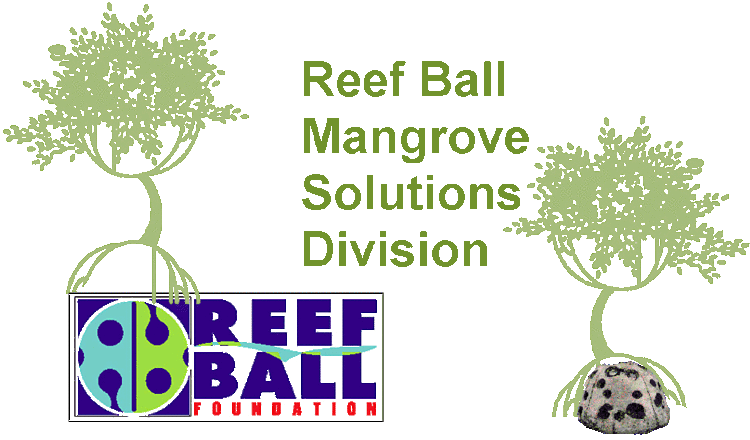Type 501(c)(3) Location Athens, Georgia, USA Founder Todd Barber | Focus Ocean ecosystem repair Website www.reefball.org Founded 1993 | |
 | ||
Similar Coral Reef Alliance, Chesapeake Bay Foundation, International Society for Reef Stud, Project AWARE, The My Hero Project | ||
The Reef Ball Foundation, Inc. is a 501(c)(3) publicly supported non-profit organization that functions as an international environmental Non-governmental organization. The foundation uses Reef Ball artificial reef technology, combined with coral propagation, transplant technology, public education and community training to build, restore and protect coral reefs. The foundation has established "Reef Ball reefs" in 59 countries, and ongoing projects take the total countries reached to more than 70. Over 550,000 Reef Balls have been deployed in more than 4,000 projects.
Contents
History
The Reef Ball Foundation was started in 1993 by Todd Barber, who founded the Reef Ball Development Group INC. with a goal of helping to preserve and protect coral reefs for the benefit of future generations. An avid scuba diver, Barber witnessed his favorite coral reef on Grand Cayman destroyed by Hurricane Gilbert, and wanted to do something to help increase the resiliency of eroding coral reefs. Barber and his father patented the idea of building artificial reef modules with a central inflatable bladder, so that the modules would be buoyant, thus making them easy to deploy by hand or with a small boat, rather than requiring heavy machinery.
Over the next few years, with the help of research colleagues at University of Georgia, Nationwide Artificial Reef Coordinators and the Florida Institute of Technology, Barber and a small number of colleagues and business partners worked to perfect the design. Reef balls can be found in almost every coastal state in the United States, and on every continent including Antarctica. The Foundation has expanded the scope of its projects to include coral rescue, propagation and transplant operations, mitigation projects, mangrove restorations and nursery development. Reef Ball also participates in education and outreach regarding environmental stewardship and coral reefs.
In 2001, The Reef Ball Foundation took control of the Reef Ball Development Group, and now operates all aspects of the business as a non-profit organization. By 2007, the foundation had deployed 550,000 reef balls worldwide.
Mission
The Foundation states the mission of the development group as follows:
The Reef Ball Development Group is a volunteer group whose mission statement charters the group to help restore our world's ocean ecosystems through the development and use of aesthetically pleasing, ecologically sound, and economically designed artificial reefs. We emphasize on-going research, public education, community involvement, and reefs that promote and support natural species diversity and population density.
Technology and research
The Reef Ball Foundation manufactures reef balls for open ocean deployment in sizes from 30 centimetres (1 ft) in diameter and 15 kilograms (33 lb), up to 2.5 metres (8.2 ft) and 3,500 kilograms (8,000 lb). Reef balls are hollow, and typically have several convex-concave holes of varying sizes to most closely approximate natural coral reef conditions by creating whirlpools. Reef balls are made from pH balanced microsilica concrete, and are treated to create a rough surface texture, in order to promote settling by marine organisms such as corals, algae, coralline algae, and sponges.
Over the last decade, scientific research has been conducted with respect to the ability of artificial reefs to produce or attract biomass, and the effectiveness of reef balls in replicating natural habitat, and mitigating disasters. The use of reef balls as breakwaters and for beach stabilization has also been extensively studied.
Publication
The Reef ball foundation publishes in the Aquaculture Research & Development, which is the official journal of the society.
Projects
The Foundation undertakes an array of projects including artificial reef deployment, estuary restoration, mangrove plantings, oyster reef creation, coral propagation, natural disaster recovery, erosion control, and education on reef preservation.
Some notable projects include:
Designed artificial reefs
The trend in artificial reef development has been toward the construction of designed artificial reefs, built from materials specifically designed to function as reefs. Designed systems (such as reef balls) can be modified to achieve a variety of goals. These include coral reef rehabilitation, fishery enhancement, snorkeling and diving trails, beach erosion protection, surfing enhancement, fish spawning sites, planters for mangrove replanting, enhancement of lobster fisheries, creation of oyster reefs, estuary rehabilitation, and even exotic uses such as deep water Oculina coral replanting. Designed systems can overcome many of the problems associated with "materials of opportunity" such as stability in storms, durability, biological fit, lack of potential pollution problems, availability, and reduction in long term artificial reef costs.
Designed reefs have been developed specifically for coral reef rehabilitation, and can therefore be used in a more specific niche than materials of opportunity. Some examples of specialized adaptations which "designed reefs" can use include: specialized surface textures, coral planting attachment points, specialized pH-neutral surfaces (such as neutralized concrete, ceramics or mineral accretion surfaces), fissures to create currents for corals, and avoidance of materials such as iron (which may cause algae to overgrow coral). Other types of designed systems can create aquaculture opportunities for lobsters, create oyster beds, or be used for a large variety of other specialized needs.
